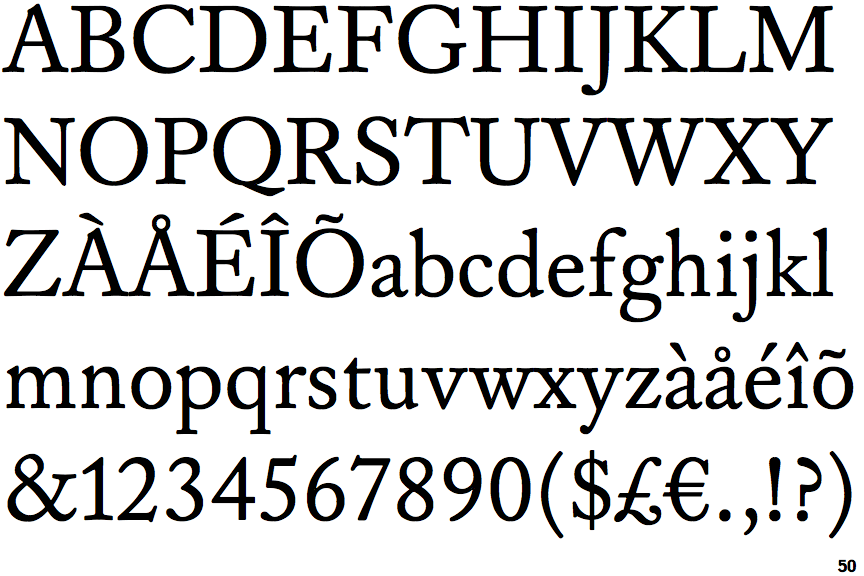
- WILLIAMS CASLON TEXT FONT FREE PRO
- WILLIAMS CASLON TEXT FONT FREE TRIAL
- WILLIAMS CASLON TEXT FONT FREE DOWNLOAD
Through the next few years due to demolitions of various buildings, his body would be relocated several times until finding its final resting place at the Church of England cemetery in Warstone Lane. His coffin was eventually taken in secrecy to a local church and stored. It proved difficult because Baskerville lived as an Atheist and churches of the time refused his remains.
WILLIAMS CASLON TEXT FONT FREE DOWNLOAD
Download the free caslon font by george williams. Caslon is an old style serif typeface originally designed by william caslon in 1722.
WILLIAMS CASLON TEXT FONT FREE PRO
His coffin was taken to Gibson’s warehouse and stored for 8 years while they searched for a final resting place. For the free versions, go to fonts geek for the adobe caslon pro regular and to font squirrel for libre. After her death, the property was sold and a canal was dug through his resting place in 1821. The Émigré Foundry revival of Baskerville is named Mrs. His common-law wife, Sarah Eaves, would follow Baskerville in death approximately 13 years later. I originally found it hysterically funny when reading that the first book about Baskerville was set in Caslon.Īfter reading more accounts after his death, it wasn’t as funny. John Baskerville was an Atheist that was buried in his backyard at his request. According to Meggs, many of John Baskerville’s printing methods were lost at the time of his death in 1775. This combination produced dense lettering printed on smooth, glossy paper that was uncharacteristic of printing stock of its time. He also developed the first hand woven hot press papers.
WILLIAMS CASLON TEXT FONT FREE TRIAL
At this time, he developed his own printing inks through trial and error. He began experimentation in printing later in life during his mid forties. The treatment of serifs is new: they flow smoothly out of the major strokes and terminate as refined points” (Meggs, 128).īaskerville was a meticulous craftsman than took pride in his book making. In comparison with earlier designs, his types are wider, the weight contrast between thick and thin strokes is increased, and the placement of the thickest part of the letter is different. His letters possessed a new elegance and lightness. “Baskerville’s type designs, which bear his name to this day, represent the zenith of the transitional style bridging the gap between Old Style and modern type design. I also agree with my partner 100% that Caslon “lacks the flair and gracefulness of Baskerville” (Ferrell).Īlthough the two gentlemen that created these typefaces shared similar backgrounds, Baskerville produced a higher quality product. It has smoother serifs than wedge-serifs of Caslon. I found that I am more naturally drawn to Baskerville. I decided to examine the two fonts more closely out of curiosity. Prior to reading William’s post, I personally never took the time to compare the two designs. These two Transitional fonts represent the most prominent from the 18th century. Luin kept his design true to the original and Caslon Classico consists of two cuts with corresponding italic and small caps characters.William Ferrell does a more than adequate job contrasting and comparing both Caslon and Baskerville.

Caslon Classico appeared in 1993 and was designed by Franco Luin, the designer of various interpretations of classic typefaces. Next to Baskerville, Caslon is known as the embodiment of the English Baroque-Antiqua and has gone through numerous new interpretations, meaning that every Caslon is slightly different. The overall impression which Caslon makes is serious, elegant and linear. The serifs are finer and the axis of the curvature is almost or completely vertical. The characteristics of the earlier Renaissance typefaces are only barely detectable. The Caslon font was long known as the script of kings, although on the other side of the political spectrum, the Americans used it as well for their Declaration of Independence. His major influences were the Dutch designers Christoffel van Dijcks and Dirck Voskens. The Englishman William Caslon (1672-1766) first cut his typeface Caslon in 1725. For the German lower-case diacritical marks, all Headline Types complements contain alternative integrated accents which allow the compact setting of lower-case headlines. For a number of Bodytypes, hairlines and serifs were thickened or the whole typeface was adjusted to meet the optical requirements for setting type in small sizes. For the Bodytypes, fine spaces were created which prevented the smear effect on acute angles in small typesizes. In addition to the adjustment of spacing, there are also adjustments in the design. The kerning tables, as well, have been individualized for each of these type varieties. That of the Headline Types is decidedly more narrow in order to do justice to the requirements of headline typesetting.

That of the Bodytypes is adjusted for readability. The most obvious differentiation can be found in the spacing. One is designed specifically for headline typesetting (SH: Scangraphic Headline Types) and one specifically for text typesetting (SB Scangraphic Bodytypes). Since the release of these fonts most typefaces in the Scangraphic Type Collection appear in two versions.


 0 kommentar(er)
0 kommentar(er)
